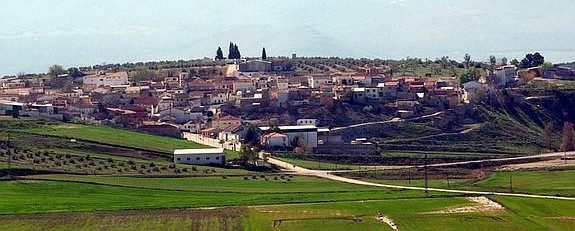On the morning of Wednesday January 22, an earthquake hit the village of Dehesas Viejas, 30 miles north of Granada.
The IGN, Spain’s Nationwide Geographic Institute, says that the tremor occurred at 25 minutes to seven within the morning, and registered 3.0 on the Richter Scale.
Earthquakes don’t do a lot injury if their centre is deep within the earth. This one was eight kilometres under floor stage. No-one in Granada, 50 kilometres away, felt it.
Charles Richter invented his well-known earthquake-measuring components in 1935. Something beneath 5.0 is classed as ‘reasonable’. 9 is an excessive earthquake, and there are lower than three per century of that magnitude.
We typically hear the time period “epicentre” when the media report earthquakes. This refers back to the level on the earth’s floor the place the tremor is felt. They are saying that the ‘aftershocks’ are sometimes worse for us people than the unique quake.
On this case, the following tremors have been felt in Campotéjar and Otívar, villages 10 kilometres and 120 kilometres from the epicentre. This earthquake is sort of definitely linked to the tremor in Santiago de Calatrava (Jaén) which occurred on the identical day, and which registered 3.3, however was (fortunately) 12 miles under floor stage.
We have a tendency not to consider seismic exercise right here in Andalucia, however in actual fact we’re sitting on one of many world’s most energetic earthquake zones.
Some 172 earthquakes have been recorded in our area within the final 10 years. Every one in all these registered greater than 4 on the Richter Scale. 2016 was a very dangerous 12 months, with 55 tremors.
The worst in recent times struck Malaga in January 2016, however fortunately its epicentre was out at sea, 85 miles from the town centre. The most important quake in dwelling reminiscence struck Granada in March 1954, scoring 7.8 on the Richter Scale.

The 2011 Lorca quake over the borden in Murcia that killed 9 was a comparatively modest 5.1 on the dimensions.
Sadly for us, we’re sitting on the sting of the African tectonic plate. Yearly, Africa rides up over Europe on the price of 5 millimetres per 12 months. This triggers frequent earthquakes. Granada, particularly, has been hit onerous through the years: in 1806, 13 folks died in a neighborhood quake.
A lot worse was the tremor of 1884, which killed 1,200 folks and registered 6.7 on the Richter Scale. Eleven died in 1956, as soon as once more in Granada.
THE LISBON EARTHQUAKE OF 1755
The French thinker Voltaire wrote a well-known poem concerning the 7.7 quake and accompanying tsunami which devastated the south of the Iberian Peninsula on 1 November, 1755.
Its epicentre was situated within the Algarve. Historians have estimated that 40,000 folks died in Portugal, whereas 10,000 Moroccans have been additionally killed. Eye witnesses stated that the quake lasted six minutes, and it opened cracks within the floor 16 ft broad.
Forty minutes after the earthquake, a tsunami swept in from the Atlantic, and this triggered the biggest lack of life.

Two incidental penalties of the Lisbon Quake are value mentioning. The primary one is the Huelva resort of Isla Cristina. This area, proper on the Portuguese border, shouldn’t be – strictly talking – an island. It’s well-known all through Andalucía for its seafood, particularly its ‘white prawns’. Earlier than 1755, this stretch of coast was an inhospitable marsh, however the earthquake threw up a strong piece of terra ferma, in the present day house to 22,000 andaluces.
The second includes Ronda. When the so-called Catholic Monarchs Ferdinand and Isabella conquered Ronda in 1486, they commanded that the Islamic mosque be rebuilt as a cathedral. (Just a few brief years later, Christopher Columbus got here to see the royal duo whereas they have been busy taking Granada from the Arabs, with a scheme which wanted their sponsorship: one thing about crusing west to get to Japan, and everyone knows what it led to).
The nice Gothic cathedral in Ronda lasted solely 130 years (‘solely’, as a result of huge church buildings often took centuries to construct). The Lisbon Earthquake destroyed it.
Right now, the church of Santa María la Mayor stands on the spot, and guests can see remnants of each the mosque and the gothic church. Let’s hope a number of extra a long time go earlier than the subsequent huge earthquake hits us!
 Costa News Spain Breaking News | English News in Spain.
Costa News Spain Breaking News | English News in Spain.





